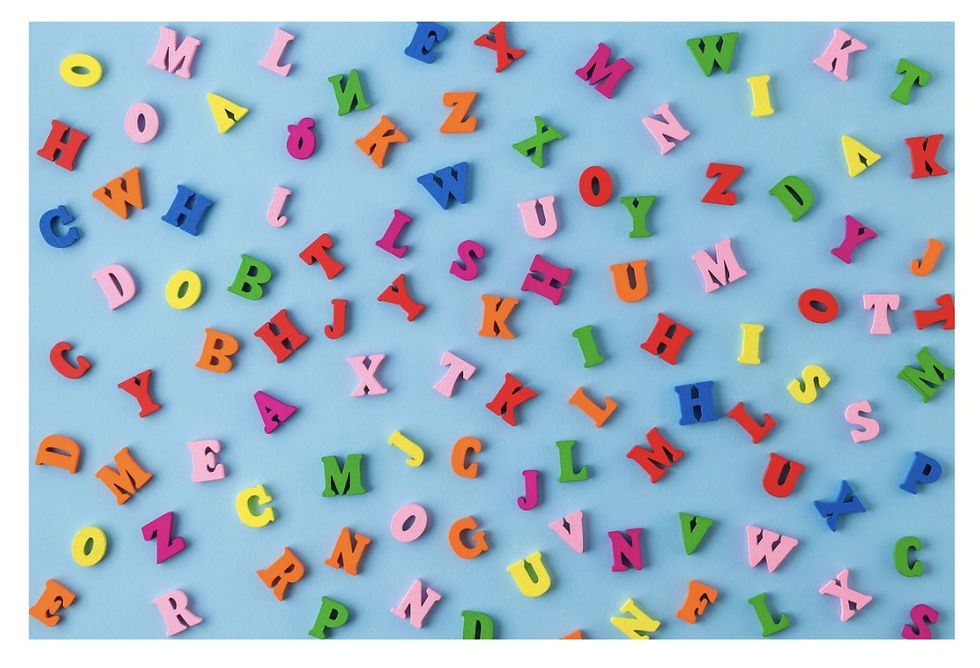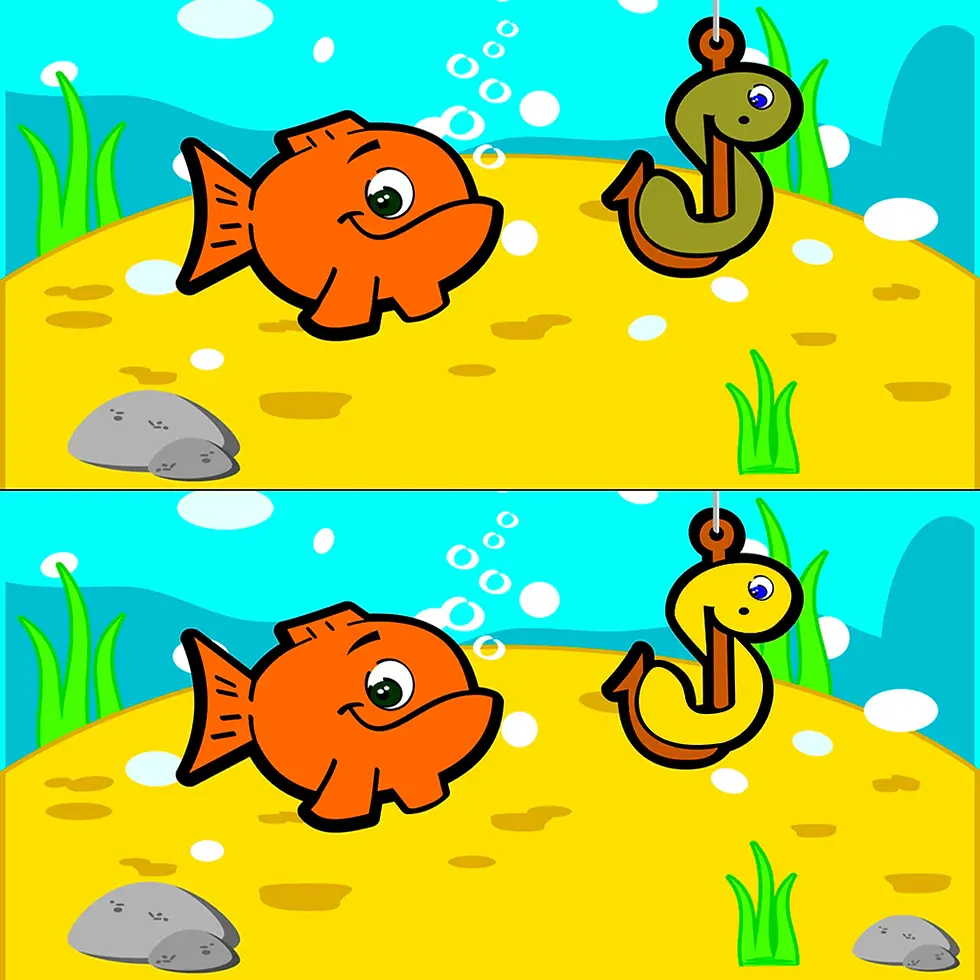Visual Perceptual Skills
- cynthia99578
- Apr 1, 2024
- 4 min read

What is visual perception? It is the ability for your brain to process and interpret visual stimuli within your environment or make sense of what you see. This is necessary for everyday activities or routines such as dressing, feeding and play activities as well as academic tasks like reading, writing and math. Visual perception differs from visual acuity, as visual acuity focuses on your ability to see from a given distance. Visual perceptual skills can be broken down to seven different skills: Visual memory, visual sequential memory, form constancy, figure ground, spatial relations, visual closure, and visual discrimination.
Visual memory- Ability to store visual details and information of what was seen in their short term memory. When these details are not stored, it can impact a person's ability to recall information.
For children, this can present as:
Difficulty with identifying letters, numbers and shapes as well as sight words.
Difficulty copying off the board during a lesson
Reproducing figures and patterns
Activities to strengthen this skill:
Memory games
I Spy
Pixy Cubes
Copy a picture/ drawing
2. Sequential memory- Ability to recall a series or sequence of forms.
For children, this can present as:
Difficulty remembering what letters or numbers go before or after a given letter/ number
Near point copying- Copying items from a book or page right in front of you
Far point copying- Copying items from far away such as the board in front of a classroom
Difficulties with reading comprehension (Remembering sequence of events in a story)

Activities to strengthen this skill:
Word searches
Continuing a pattern (using colored beads, drawing shapes, letters, etc)
Maze Copying (Example on the left)
3. Form constancy- Ability to recognize forms, letters and words regardless of orientation (upside down, rotated, inverted, etc).
For children, this can present as:
Difficulty recognizing letters, numbers or other forms in different sizes or font
Confusing various letters like "p", "q" "b" and "d"
Recognizing errors in writing

Activities to strengthen this skill:
Making block designs using visual model
Create pictures using different shapes
Worksheets- Have the child find similar shapes, forms, or colors on a worksheet
4. Figure ground- Ability to locate certain items within a busy background.
For children, this can present as:
Difficulty copying items off a board or page without missing letters, words, punctuation, etc.
Disorganized work space (desk, room, locker/cubby)
Difficulty finding certain items necessary for everyday tasks (i.e. a pencil or specific colored crayon/pen in pencil case OR matching socks in a drawer for dressing)

Activities to strengthen this skill
Where's Waldo?
Matching game
Jigsaw puzzles
Have the child find a letter, number, shape or other form on a worksheet
Scavenger hunt
5. Spatial relations- Ability to perceive the position of two of objects in space.
For children, this can present as:
Difficulty motor planning (planning and executing movements to complete an activity efficiently)
Understanding spatial terms such as "above/below" "in/out" "in front/behind"
Laterality terms (right versus left side of the body)
Difficulty maintaining place in order to read sentences, books and math problems
Activities to strengthen this skill:
Obstacle courses
Simon Says
6. Visual closure- Ability to identify an object or form even when only part of it is visible.
For children, this can present as:
Decreased ability to write letters, numbers and words in its entirety
Complete inset or interlocking puzzles
Find and/or identify objects where only a portion of it is visible

Activities to strengthen this skill:
Provide the child with a worksheet that shows a dotted figure on the left side and have them match it a full figure on the right of the page (example to the left).
Jigsaw puzzles
Flashcards: Have the child identify different shapes, letters, animals, etc with half of the figure or form shown on the flashcard.
Draw half of a figure or form and have the child try to complete the rest of it
7. Visual discrimination- Ability to identify differences between objects and classify objects, figures and forms.
For children, this can present as:
Difficulty matching or sorting items correctly
Difficulty finding errors in work such as letter reversals
Differentiate between letters and numbers or similar words

Activities to strengthen this skill:
Provide the child with a worksheet of various sized letters or shapes. Have them circle or mark the same shape or letter throughout the worksheet using a marker.
Sorting game- Provide the child with different colored items (i.e. pom poms, bean bags, Legos, etc) and have them sort based on color, size, etc.
Matching game or cards
Spot the difference games or worksheets
DISCLAIMER: The content in this blog should not be used in place of medical advice/treatment and is solely for informational purposes. All activities/exercises posted in this blog should be performed with adult supervision, caution, and at your own risk. Big Leaps, LLC is not responsible for any injury while performing an activity/exercise that has been posted on this blog. If you have any information on the content of our blog, feel free to contact us at info@bigleapsct.com.



Comments